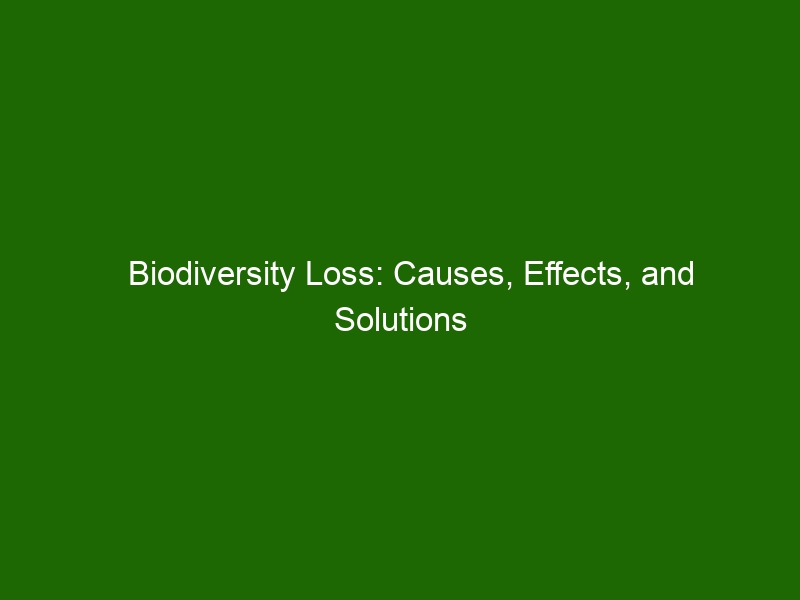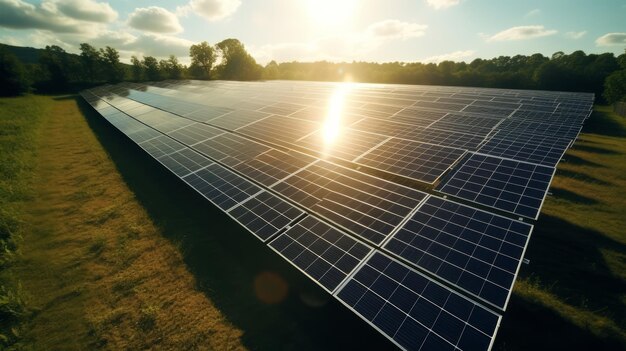
Biodiversity Loss: Unpacking the Crisis – Causes, Devastating Impacts, and Urgent Solutions
Imagine a vast, intricate tapestry woven with countless threads of different colors, textures, and patterns. Each thread plays a vital role, contributing to the beauty, strength, and integrity of the whole. Now, imagine threads starting to break, fray, and disappear at an alarming rate. This tapestry, in our analogy, is life on Earth, and the disappearing threads represent biodiversity loss.
Biodiversity, short for biological diversity, refers to the incredible variety of life on Earth – from the smallest microbes to the largest whales, from desert cacti to rainforest trees. It encompasses the diversity within species (genetic diversity), between species (species diversity), and of entire ecosystems (ecosystem diversity). This rich tapestry of life is not just beautiful; it’s essential for our survival and the health of our planet.
But today, our planet is facing a silent crisis: biodiversity loss. Species are disappearing at a rate hundreds to thousands of times faster than the natural extinction rate, and entire ecosystems are degrading. This isn’t just an environmental problem; it’s a profound threat to human well-being, economic stability, and the very future of life on Earth.
In this comprehensive guide, we’ll unpack the complex issue of biodiversity loss, exploring its primary causes, the far-reaching impacts it has on our world, and the urgent solutions we can implement, both individually and collectively, to reverse this alarming trend.
What is Biodiversity and Why Does It Matter So Much?
Before diving into the crisis, let’s understand why biodiversity is so incredibly important.
Biodiversity is the sum total of all living things, their genes, and the ecosystems they form. Think of it like a giant, interconnected web where every creature, plant, and microorganism has a role to play.
Why it matters:
- Ecosystem Services: Nature provides us with countless "free" services that are essential for our survival. These include:
- Clean Air: Forests and oceans absorb carbon dioxide and produce oxygen.
- Clean Water: Wetlands and healthy soils filter pollutants, providing fresh drinking water.
- Pollination: Bees, butterflies, and other animals pollinate crops, ensuring our food supply.
- Soil Fertility: Microorganisms break down organic matter, enriching soil for agriculture.
- Climate Regulation: Forests and oceans absorb greenhouse gases, helping to stabilize the climate.
- Food Security: A wide variety of plants and animals provides a diverse food source, making our food systems more resilient to diseases and climate change.
- Medicine and Research: Many life-saving medicines are derived from plants, animals, and microorganisms. New discoveries for diseases often come from biodiversity.
- Economic Value: Biodiversity supports industries like agriculture, fisheries, forestry, eco-tourism, and pharmaceuticals, providing jobs and income.
- Cultural and Spiritual Value: Many cultures have deep connections to nature and specific species, which hold significant spiritual and aesthetic value.
- Resilience and Stability: Diverse ecosystems are more resilient to disturbances like disease, climate change, and natural disasters. If one species is lost, others can often fill its role, preventing a complete collapse.
- Beauty and Recreation: Nature provides endless opportunities for recreation, inspiration, and wonder, enhancing our quality of life.
The Alarming Decline: A Crisis Unfolding
The scientific consensus is clear: biodiversity is declining at an unprecedented and accelerating rate. Reports from the Intergovernmental Science-Policy Platform on Biodiversity and Ecosystem Services (IPBES) indicate that around 1 million animal and plant species are now threatened with extinction, many within decades. This rate of extinction is tens to hundreds of times higher than it has been on average over the past 10 million years. We are currently experiencing what many scientists call the sixth mass extinction event, the first one caused by human activity.
This isn’t just about losing charismatic megafauna like pandas or tigers; it’s about the silent disappearance of countless insects, fungi, plants, and microorganisms that underpin our very existence.
Causes of Biodiversity Loss: The Threats We Face
The causes of biodiversity loss are complex and interconnected, but they are primarily driven by human activities. Scientists have identified five major direct drivers, often summarized by the acronym "HIPPO + C" (or simply "HIPPO" with climate change added as a major new threat):
1. Habitat Destruction & Loss (The Biggest Culprit)
This is by far the leading cause of biodiversity loss. When natural habitats are destroyed or degraded, species lose their homes, food sources, and breeding grounds, often leading to their demise.
- Deforestation: Clearing forests for agriculture (soy, palm oil, cattle ranching), logging, and urbanization destroys the habitats of countless species. Rainforests, in particular, are biodiversity hotspots.
- Urbanization and Infrastructure Development: Expanding cities, roads, dams, and mines fragment and destroy natural landscapes.
- Agriculture: Converting natural ecosystems into farmland, often monocultures (growing a single crop), reduces biodiversity drastically. Pesticide and herbicide use further harms wildlife.
- Wetland Drainage: Wetlands, vital for water filtration and wildlife, are often drained for development or agriculture.
- Ocean Habitat Degradation: Coral reefs, mangroves, and seagrass beds are being destroyed by pollution, coastal development, and destructive fishing practices.
2. Climate Change
Global warming, driven primarily by human emissions of greenhouse gases, is having a profound and accelerating impact on biodiversity.
- Rising Temperatures: Species are struggling to adapt to warmer temperatures, leading to shifts in geographical ranges, altered breeding cycles, and increased heat stress. Some species cannot move fast enough or have nowhere to go.
- Extreme Weather Events: More frequent and intense droughts, floods, wildfires, and storms destroy habitats and directly kill wildlife.
- Ocean Acidification: As oceans absorb more carbon dioxide, they become more acidic, harming marine life with shells and skeletons, such as corals, shellfish, and plankton, which form the base of the marine food web.
- Sea-Level Rise: Coastal habitats like mangroves and salt marshes are being submerged, impacting the species that rely on them.
3. Pollution
Pollution poisons ecosystems and harms biodiversity in countless ways.
- Plastic Pollution: Billions of tons of plastic enter our oceans and land, harming wildlife through entanglement, ingestion, and the release of toxic chemicals.
- Chemical Pollution: Pesticides, industrial chemicals, heavy metals, and pharmaceutical waste contaminate air, water, and soil, poisoning animals and plants.
- Nutrient Pollution (Eutrophication): Runoff from agriculture (fertilizers) and sewage leads to excessive nutrients in water bodies, causing algal blooms that deplete oxygen and create "dead zones."
- Air Pollution: Acid rain and smog damage forests and aquatic ecosystems.
- Noise and Light Pollution: Disrupts animal behavior, communication, and migration patterns, especially in urbanized areas.
4. Overexploitation (Overharvesting)
Taking too many resources from the wild, faster than they can replenish, leads to population declines and extinction.
- Overfishing: Depletes fish stocks, harms marine ecosystems through destructive fishing methods (trawling, bycatch), and disrupts the marine food web.
- Unsustainable Hunting and Poaching: Illegal hunting for bushmeat, trophies, or body parts (e.g., rhino horn, elephant ivory) drives endangered species to the brink.
- Unsustainable Logging: Harvesting timber at rates that prevent forests from regenerating.
- Illegal Wildlife Trade: The global trade in exotic pets, traditional medicine ingredients, and animal products poses a massive threat to countless species.
5. Invasive Alien Species
When non-native species are introduced to new environments, either accidentally or intentionally, they can outcompete, prey upon, or introduce diseases to native species, often with devastating consequences.
- Competition: Invasive species can outcompete native species for food, water, and space.
- Predation: New predators can decimate native populations that have no natural defenses.
- Disease Transmission: Invasive species can carry diseases to which native species have no immunity.
- Habitat Alteration: Some invasive plants can drastically change the physical structure of an ecosystem.
- Examples: Kudzu vine smothering native plants, cane toads in Australia, zebra mussels in North American waterways.
Impacts of Biodiversity Loss: The Domino Effect
The loss of biodiversity isn’t just about sad stories of disappearing animals; it has profound and often irreversible consequences for human societies and the planet’s ability to support life.
1. Ecosystem Collapse and Imbalance
- Broken Food Webs: The disappearance of one species can have a cascading effect throughout an ecosystem, disrupting food chains and leading to the decline or extinction of other species.
- Reduced Ecosystem Function: When key species are lost, the entire ecosystem’s ability to perform its vital services (like water purification or soil creation) is compromised.
- Increased Vulnerability: Less diverse ecosystems are less stable and more susceptible to collapse when faced with environmental changes or disturbances.
2. Loss of Essential Ecosystem Services
- Food Scarcity: Declines in pollinators (like bees) threaten crop production. Overfishing leads to empty oceans. Loss of fertile soil reduces agricultural output.
- Water Shortages: Degradation of forests and wetlands reduces natural water filtration and regulation, leading to poorer water quality and increased drought risk.
- Climate Instability: Reduced forest cover means less carbon absorption, accelerating climate change. Damage to oceans reduces their capacity to absorb heat and CO2.
- Increased Natural Disasters: Healthy ecosystems (like mangroves and coral reefs) act as natural barriers against storms and tsunamis. Their loss makes coastal areas more vulnerable.
3. Economic Consequences
- Impact on Industries: Fisheries, forestry, agriculture, pharmaceuticals, and tourism industries suffer significant economic losses due to reduced resources and ecosystem degradation.
- Increased Costs: Replacing nature’s "free services" (e.g., building water treatment plants instead of relying on wetlands, using artificial fertilizers instead of healthy soil) is incredibly expensive.
- Loss of Future Opportunities: We lose potential new medicines, food sources, and materials before we even discover them.
4. Increased Risk of Disease
- Zoonotic Diseases: The destruction of natural habitats brings humans and domestic animals into closer contact with wildlife, increasing the risk of diseases jumping from animals to humans (e.g., COVID-19, Ebola).
- Reduced Natural Controls: Loss of predators or ecosystem balance can lead to outbreaks of disease-carrying pests.
5. Reduced Resilience to Change
- Diverse ecosystems are like a diverse investment portfolio – they are more resilient to shocks. When biodiversity is lost, ecosystems become less able to adapt to new threats like climate change, pollution, or new diseases.
6. Loss of Beauty, Culture, and Spiritual Value
- The irreversible loss of unique species and natural landscapes diminishes the aesthetic beauty of our world and erodes the cultural and spiritual heritage of communities deeply connected to nature.
- Future generations will be deprived of the wonder and inspiration that a thriving natural world provides.
Solutions to Biodiversity Loss: What We Can Do
Addressing biodiversity loss requires a multi-faceted approach, involving governments, industries, communities, and individuals working together. It’s an urgent task, but one that is achievable if we act decisively.
1. Global and Policy-Level Solutions
These are the "big picture" actions that require international cooperation and strong governance.
- Establish and Effectively Manage Protected Areas: Designate and enforce national parks, wildlife reserves, marine protected areas, and other conservation zones to safeguard critical habitats and species.
- International Agreements and Conventions: Strengthen and enforce global agreements like the Convention on Biological Diversity (CBD) and CITES (Convention on International Trade in Endangered Species of Wild Fauna and Flora) to regulate trade and promote conservation.
- Sustainable Land and Resource Management: Implement policies that promote sustainable forestry, agriculture, fisheries, and water management practices.
- Address Climate Change: Rapidly reduce greenhouse gas emissions by transitioning to renewable energy, improving energy efficiency, and promoting sustainable transportation.
- Ecological Restoration and Rewilding: Invest in projects to restore degraded ecosystems (e.g., reforestation, wetland restoration) and reintroduce native species to help nature recover.
- Combat Illegal Wildlife Trade: Strengthen law enforcement, international cooperation, and public awareness campaigns to dismantle poaching and illegal wildlife trade networks.
- Reform Subsidies: Eliminate harmful subsidies (e.g., for fossil fuels, unsustainable agriculture) that contribute to biodiversity loss and redirect them towards sustainable practices.
2. Community and Industry-Level Solutions
These actions focus on local initiatives, responsible business practices, and collective community efforts.
- Support Sustainable Agriculture: Promote farming methods that protect soil health, reduce chemical use, conserve water, and support biodiversity (e.g., organic farming, agroecology, permaculture).
- Responsible Business Practices: Encourage corporations to adopt sustainable supply chains, reduce their environmental footprint, and invest in conservation efforts.
- Eco-tourism: Develop and support tourism that benefits local communities and provides economic incentives for protecting natural areas and wildlife.
- Community-Based Conservation: Empower local communities and Indigenous peoples, who often have deep traditional knowledge, to manage and protect their natural resources.
- Green Infrastructure: Incorporate natural elements (e.g., green roofs, permeable pavements, urban forests) into urban planning to support biodiversity and ecosystem services.
- Pollution Control: Implement strict regulations on industrial emissions, wastewater treatment, and waste management to reduce pollution.
- Invasive Species Management: Develop strategies for preventing the introduction of invasive species and for controlling or eradicating existing ones.
3. Individual Actions: What You Can Do
Every individual has the power to contribute to biodiversity conservation through their daily choices and actions. Small changes, when multiplied by millions, can make a huge difference.
- Reduce Your Consumption: Buy less, reuse more, and recycle properly. This reduces demand for resources and minimizes waste.
- Eat Sustainably:
- Reduce Meat Consumption: Industrial meat production is a major driver of habitat loss and greenhouse gas emissions.
- Choose Sustainable Seafood: Look for certifications like the Marine Stewardship Council (MSC) to ensure your seafood was caught sustainably.
- Buy Local and Organic: Support farmers who use sustainable practices and reduce your food’s carbon footprint.
- Reduce Food Waste: Plan meals, store food properly, and compost scraps.
- Conserve Energy and Water:
- Use energy-efficient appliances, turn off lights, and unplug electronics.
- Take shorter showers, fix leaks, and use water-saving landscaping.
- Support Eco-Friendly Products:
- Choose products with minimal packaging, made from recycled or sustainable materials.
- Avoid products containing palm oil unless it’s certified sustainable (RSPO).
- Use non-toxic cleaning products and personal care items.
- Get Involved and Educate Others:
- Volunteer: Join local conservation groups or participate in clean-up efforts.
- Donate: Support reputable conservation organizations working on the front lines.
- Learn More: Read books, watch documentaries, and stay informed about environmental issues.
- Talk About It: Share your knowledge with friends, family, and your community.
- Vote and Advocate:
- Support political leaders and policies that prioritize environmental protection and biodiversity conservation.
- Contact your elected officials to express your concerns and advocate for change.
- Be a Responsible Tourist:
- Choose eco-friendly tour operators.
- Respect wildlife and their habitats (don’t feed animals, don’t buy products made from endangered species).
- Stay on marked trails.
- Plant Native Species: If you have a garden, choose native plants that provide food and habitat for local wildlife, reducing the need for water and pesticides.
- Reduce Your Carbon Footprint: Walk, bike, or use public transport more often. Consider purchasing an electric vehicle.
The Road Ahead: Hope and Urgency
Biodiversity loss is a monumental challenge, but it’s not too late to act. The solutions are known, and the science is clear. What’s needed now is widespread recognition of the crisis, political will, and collective action on an unprecedented scale.
Protecting biodiversity isn’t just about saving animals and plants; it’s about safeguarding the very systems that sustain human life. It’s about ensuring a healthy, resilient, and beautiful planet for ourselves and for future generations. By understanding the causes, recognizing the impacts, and embracing the solutions, we can all become part of the movement to heal our planet’s precious tapestry of life. The time to act is now.



Post Comment